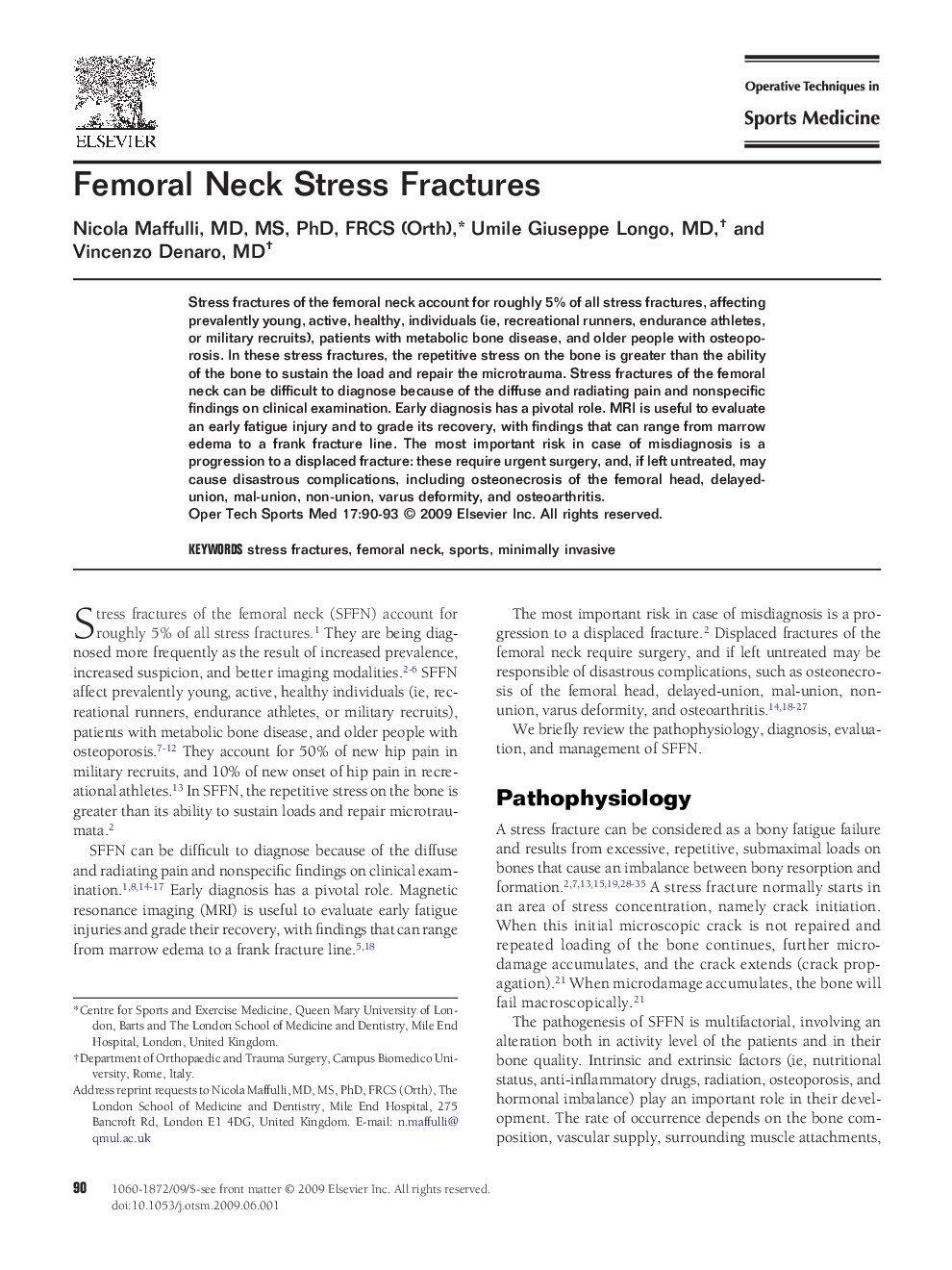| Article ID | Journal | Published Year | Pages | File Type |
|---|---|---|---|---|
| 4079795 | Operative Techniques in Sports Medicine | 2009 | 4 Pages |
Stress fractures of the femoral neck account for roughly 5% of all stress fractures, affecting prevalently young, active, healthy, individuals (ie, recreational runners, endurance athletes, or military recruits), patients with metabolic bone disease, and older people with osteoporosis. In these stress fractures, the repetitive stress on the bone is greater than the ability of the bone to sustain the load and repair the microtrauma. Stress fractures of the femoral neck can be difficult to diagnose because of the diffuse and radiating pain and nonspecific findings on clinical examination. Early diagnosis has a pivotal role. MRI is useful to evaluate an early fatigue injury and to grade its recovery, with findings that can range from marrow edema to a frank fracture line. The most important risk in case of misdiagnosis is a progression to a displaced fracture: these require urgent surgery, and, if left untreated, may cause disastrous complications, including osteonecrosis of the femoral head, delayed-union, mal-union, non-union, varus deformity, and osteoarthritis.
